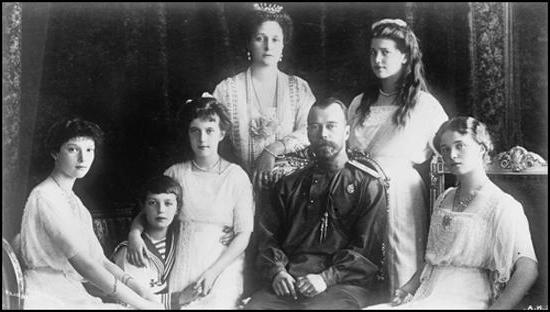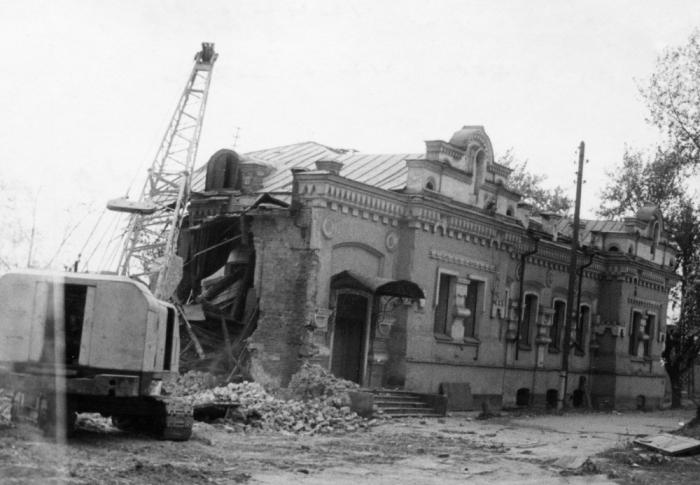Yekaterinburg became famous throughout the world as a city in which the Bolsheviks ruthlessly shot the family of Emperor Nicholas II. The place of the last imprisonment and execution of the monarch, his wife and children was chosen the house of Ipatiev. Today, many locals remember the address at which it was located (Voznesensky Prospekt 49/9), but far from everyone can tell how the building itself looked. And this is not surprising, because the house in which the royal family spent the rest of their lives was demolished in 1977. Today, only old photographs and rare exhibits in the museums of Yekaterinburg remind him of it .
Strange coincidence
Studying the history of the Russian monarchy, you can notice an interesting fact. Tsar Mikhail Fedorovich, who became the founder of the Romanov dynasty, was proclaimed ruler of Russia in March 1613 after the rite held in the Ipatiev Monastery near Kostroma. Well, what will be written further causes many bewilderment. The last representative of the same royal family, Nicholas II, together with his whole family, was killed in July 1918 in the Ipatiev House in Yekaterinburg. After this, the Romanov dynasty ceased to exist.
Why exactly the Ipatiev mansion?
The identical name of the monastery, in which Mikhail Fedorovich was blessed by the reign, and the house where Nicholas II and his family were shot, was considered a coincidence in Soviet times. But is this really so? Modern historians are sure that the Bolsheviks chose the site of the execution of Ipatev Nikolai Nikolaevich for a reason, and they give good reasons to prove their theory.
After abdicating the throne in March 1917, the last Russian emperor and his family were exiled to Tobolsk. Nothing prevented the Bolsheviks from cracking down on the monarch they hated in this Siberian city, but for some reason they brought him to Yekaterinburg. Despite the large number of buildings, an inconspicuous house of engineer Ipatiev was chosen for execution. Some modern historians believe that the reason for this choice was the acquaintance of Nikolai Nikolayevich with Peter Voikov, the commissar of the Ural Council of the Bolsheviks, who was directly involved in organizing the execution of the royal family.
In 1913, the 300th anniversary of the Romanov dynasty was solemnly celebrated in Russia, and the Ipatiev Monastery was one of the main centers for holding festivals. Its name was well-known to everyone, so when the Bolsheviks chose the Ipatiev’s house in Yekaterinburg as the place of execution of the monarch’s family, they most likely did it thoughtfully and purposefully, endowing the impending murder with a certain symbolism.
The first owners of the mansion
The ill-fated house was built in the late 80s of the XIX century by a mining engineer, state adviser Ivan Redikortsev. He chose the western slope of the Ascension Hill as the place for his future estate. The house was built taking into account the terrain. Its eastern side was one-story. Here were the main entrance to the building, rooms and a basement with an exit leading to the southern facade of the estate. The western side of the house consisted of two floors and a veranda. The building was 18 meters wide and 31 meters long. It was built with the latest technology: it had electricity, water supply, sewage and telephone communications. The rooms of the house looked rich: their walls were decorated with stucco molding and cast iron, and art was painted on the ceilings.
Redikortsev was not destined to remain the owner of the mansion for a long time. Due to financial problems in 1898, he sold the estate to the gold miner Sharaviev. After 10 years, the house again changed its owner, this time it became civil engineer Nikolai Ipatiev. His family settled in rooms on the second floor. In the premises located in the lower part of the building, Ipatiev opened his contracting office.
The arrival of the royal family in the estate
By order of the Ural Council in April 1918, the Ipatiev house was requisitioned. The Bolsheviks gave the owner 2 days to leave the mansion. Since Nikolai Nikolaevich was not in Yekaterinburg at that time, his personal belongings were demolished in the pantry room located near the basement, in which the Romanovs were shot several months later. After the requisition, the estate was surrounded with a double fence, security posts were established throughout its territory, and a sentry was placed in front of the entrance. From then until the execution of the tsar, the Bolsheviks called the estate the House of Special Purpose.

The arrested monarch and his family were brought to the Ipatiev house in Yekaterinburg on the last day of April 1918. Together with them, 5 people came to the engineer’s estate: the doctor E. Botkin, lackey A. Trupp, maid A. Demidova, cook I. Kharitonov and his assistant L. Sednev. Nicholas II and his wife and children were placed in two neighboring rooms located in the eastern wing of the building. There was a basement right under these rooms. The empress's maid was settled in the dining room, and doctors and footman in the hall. The building was equipped with several guard posts. To go to the restroom or bathroom, the prisoners of the Special Purpose House had to pass by the guards.
Execution
On the estate of Ipatiev, members of the royal family, together with the servant, spent the last 78 days of their lives. Late in the evening of July 16, 1918, the Romanovs went to bed, as usual, at 22.30. At night they were woken up and ordered to go down to the basement of Ipatiev’s house. When all seven members of the Romanov family, as well as 4 servants (assistant cook L. Sednev were not among them, since he had been removed from the mansion the day before) found themselves in the basement, they read out the verdict and was shot immediately.
The fate of the house
A few days after the execution of the Romanovs, the White Guards entered Yekaterinburg. The house again passed into the possession of Ipatiev, but he lived in it quite a bit and emigrated from the country. After that, the headquarters of the commander of the Siberian Army, General Radola Gaida, was located in the mansion. A year later, the city was again under the control of the Bolsheviks. The Ipatiev House became the headquarters of the Red Army.
In subsequent years, the mansion housed various offices. In 1927-1938, the Museum of the Revolution was opened in it . Its visitors were shown not only the premises of the house, but also the basement in which the Romanovs were shot. In the 30s, the mansion was turned into an anti-religious and cultural-educational museum, then into the Council of Atheists, a branch of the Institute of Culture, and a party archive. During the war, expositions of the Hermitage were evacuated from Leningrad in the Ipatiev House. In the post-war period, the party archive was opened again in it, then the building was transferred to the Regional Department of Culture, and a training center was opened here. One of the parts of the mansion housed the management of Soyuzpechat. In the basement of the house was equipped with a warehouse. In 1974, the building became one of the historical monuments of all-Russian significance.
Building demolition
In the mid 70-ies of the XX century, the USSR government was very concerned about the increased attention of foreigners to the house of engineer Ipatiev. In 1978, 2 round dates were immediately planned: 110 years since the birth of Nikolai Romanov and 60 years since his assassination. In order to avoid excitement around Ipatiev’s house, the KGB chairman Yuri Andropov made a proposal for his demolition. The final decision on the destruction of the mansion was made by B. Yeltsin, who then held the post of first secretary of the Sverdlovsk regional committee of the Communist Party.

The Ipatiev house, which has stood for almost 90 years, was razed to the ground in September 1977. For this, the destroyers needed 3 days, a bulldozer and a ball-woman. The pretext for the destruction of the building was the planned reconstruction of the city center. Today, on the spot where Ipatiev’s mansion once stood, stands the Temple on Blood. The townspeople built it in memory of the murdered emperor and members of his family.